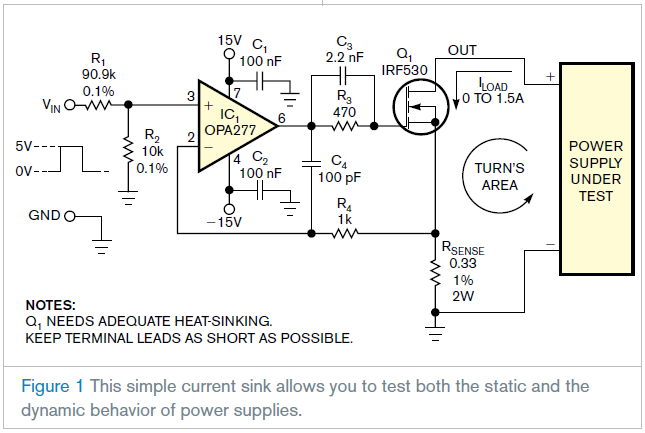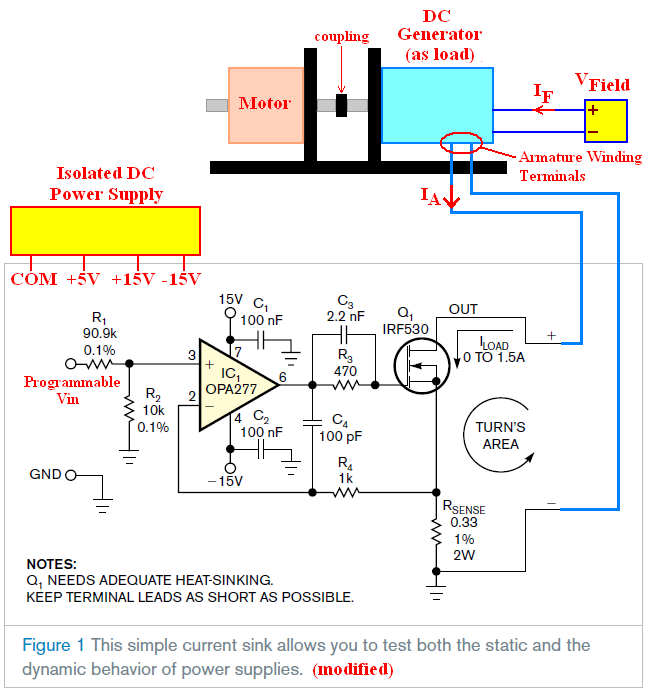powersys
Advanced Member level 1
I found a voltage-controlled current sink as following:
**broken link removed**
For the sake of convenience, the circuit schematic in the article is copied and pasted here as Figure 1 below.
I'm not sure whether I could replace the "power supply under test" with the "armature winding circuit" as shown in the modified figure. Do you think the EMF generated by the DC generator will cause any damage to the circuit? Assume the output power of the DC generator is well below the rating of the circuit in Figure 1 (original).
I plan to use an isolated DC power supply to source the +5V (for programmable input circuit) and +/-15V (for the OPA277). Do you think it is safe to connect the COM of the isolated power supply to the GND of the circuit?
Thanks.


**broken link removed**
For the sake of convenience, the circuit schematic in the article is copied and pasted here as Figure 1 below.
I'm not sure whether I could replace the "power supply under test" with the "armature winding circuit" as shown in the modified figure. Do you think the EMF generated by the DC generator will cause any damage to the circuit? Assume the output power of the DC generator is well below the rating of the circuit in Figure 1 (original).
I plan to use an isolated DC power supply to source the +5V (for programmable input circuit) and +/-15V (for the OPA277). Do you think it is safe to connect the COM of the isolated power supply to the GND of the circuit?
Thanks.

